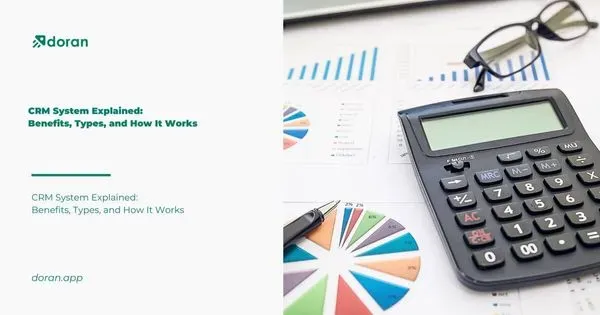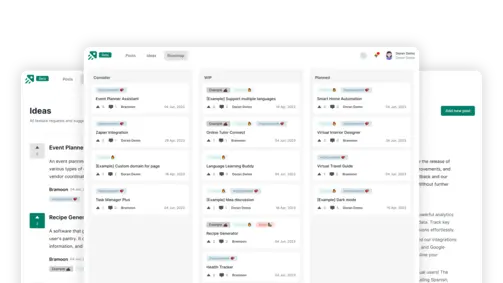Customer Effort Score (CES): Definition & Ways to Measure
Create changelog and product roadmap for your product
Explore nowTable of contents 6 min
In the pursuit of understanding and enhancing customer experiences, the Customer Effort Score (CES) has emerged as a crucial metric. This key performance indicator provides businesses with insights into the ease with which customers can achieve their goals. This guide explores the significance of Customer Effort Score, its applications, and strategies for businesses looking to optimize and leverage this metric to drive customer satisfaction and loyalty.
Why Should Companies Measure Customer Effort Score?

2010 saw CEB researchers discover that customer loyalty is more strongly correlated with a reduction in the effort required to resolve a customer’s issue than with satisfaction. They discovered that businesses can lower attrition rates and customer service expenses by acting on this knowledge and removing barriers for the consumer.
Customers repeating information, transferring to a different agent, and changing channels to get their issue fixed are all signs of high effort actions, according to CEB research. 96% of consumers who have a high-effort service interaction become more disloyal than 9% of those who have a low-effort experience, per research that was presented in the book The Effortless Experience. Customers that are disloyal are likely to cause the business more expenses since they stop making future purchases and spread bad word of mouth.
When Using Customer Experience Surveys vs. Other Survey Measures

Net Promoter Score (NPS), Customer Satisfaction (CSAT), and Customer Effort Score (CES) are the three primary measures used to evaluate customer service. These metrics can be used in conjunction with one another, therefore your company has to test different combinations to see which works best.
Customer Effort Score (CES)
What is the Customer Effort Score? Customer Effort Score is the most effective way to gauge client loyalty because it is simple to implement and monitor over time. Regretfully, it should be used in conjunction with NPS because it doesn’t always provide the whole picture. For example, it’s possible that your customer and your business get along well, but that one incidence of poor communication happened. It may surprise you to learn that only looking at Customer Effort Score does not imply a person is a devoted customer, despite what one may assume from looking at him alone.
Net Promoter Score (NPS)
Long-term loyalty is measured by NPS, which also identifies brand advocates and potential product defectors. It examines the full customer-organization interaction and is a wonderful measure of business expansion. While Customer Effort Score just measures a single touchpoint, NPS measures the entire experience, taking into account the product qualities, pricing, brand, and customer service. For this reason, NPS and CES can be used in combination.
Read more: The Power of NPS Surveys: Unlocking Customer Loyalty
CSAT (Customer Satisfaction Score)
CSAT gauges your consumers’ immediate level of satisfaction. With this flexible metric, you can enquire about a single encounter or touchpoint in a number of ways. CSAT measures a customer’s immediate response to a particular encounter, product, or event, but it is not very useful for gauging a customer’s loyalty or long-term engagement with a business.
Find out more: CSAT survey: Definition, Questionnaire, Templates & Examples
Advice on Creating CES Surveys
Customer Effort Score surveys ought to be distributed right away following encounters or certain touchpoints, such as a product purchase or a customer support encounter. Asking a consumer how simple it was to have their problem fixed during their interaction with your business can tell you if they will do business with you again. In order to better understand how to enhance or close the loop on the engagement, you might go one step further and enquire as to why they evaluated the encounter as simple or tough in the survey.
Considerations for Creating CES Surveys
-
Optimize for Mobile: Since mobile devices account for over half of all online interactions, your survey needs to be mobile-friendly. The positive options should be at the top, and the bad ones should be at the bottom. Any unnecessary content, such as logos, needless text, and external links, should be removed.
-
Automated Triggers: Following a particular touchpoint or conversation with a customer care agent, surveys ought to be distributed automatically.
-
Keep it Simple: There should only be one or two questions in the survey, and no leading questions should be included.
-
Share Your Data: Leadership from various departments should work together to implement a strategy, and results should be communicated to those who can take appropriate action. Furthermore, customer support agents must have the authority to get in touch with customers again and address any problems that weren’t resolved during the initial exchange.
What is a Good Customer Effort Score?

A cross-industry CES benchmark does not exist. This is because different average efforts are needed for clients to acquire different services, and not all businesses utilize the official 7-point scale.
Aim for an average of five or six (on a seven-point scale) as a general guideline. A flawless rating of seven probably indicates that consumers were too lazy to provide the company an honest review. This might be the result of the survey showing up at an odd time, like a month after speaking with customer support.
If the score is less than 5, you should definitely identify and address some of your consumers’ problems.
In summary, strive for improvement in the score rather than a specific figure.
Common Strategies for Raising Your Company’s Customer Effort Score Score
Consumers prefer simple transactions, and if they are having trouble getting their questions answered, they will move to another provider. By using a handful of the tools listed below, you can instantly improve your Customer Effort Score.
-
Offer a variety of contact and feedback channels: Your company should interact with clients across all digital support channels, allowing them to select the one in which they are most at ease. Popular choices include call centers, email, chat, social media assistance, and in-person support centers.
-
Use self-service tools: A lot of consumers would like to handle problems on their own rather than contacting customer support. You may minimize user effort and make it simpler for customers to get their questions answered by offering self-service choices. Self-help books and forms are excellent places to start.
-
Cut down on wait times: Consumers prefer speedy resolution of their problems over long phone waits to speak with live agents. Use a callback system or hire more workers during your busiest hours if your wait times are excessive.
When a customer is dissatisfied, it’s critical to address their concerns and make sure they completely understand what you may do to win back their business. Based on the whole poll results, you should also enhance your products or customer service department generally.
In conclusion, the Customer Effort Score (CES) offers a valuable lens through which businesses can evaluate and enhance their customer interactions. By minimizing customer effort, organizations can create seamless experiences that resonate with their audience, foster loyalty, and position themselves for sustained success in today’s competitive landscape.
What to not miss out on our blog
Gain insightful knowledge and invaluable experiences from dedicated experts.

CRM System Explained: Benefits, Types, and How It Works
Discover everything about CRM system. Learn the benefits and how a CRM system works to improve customer relationships and streamline business operations.

Are you ready? Start your free trial today.
Enhance communication, keep track of the progress, understand customers' insight and more by taking your first trial on Doran.
Sign up for free

